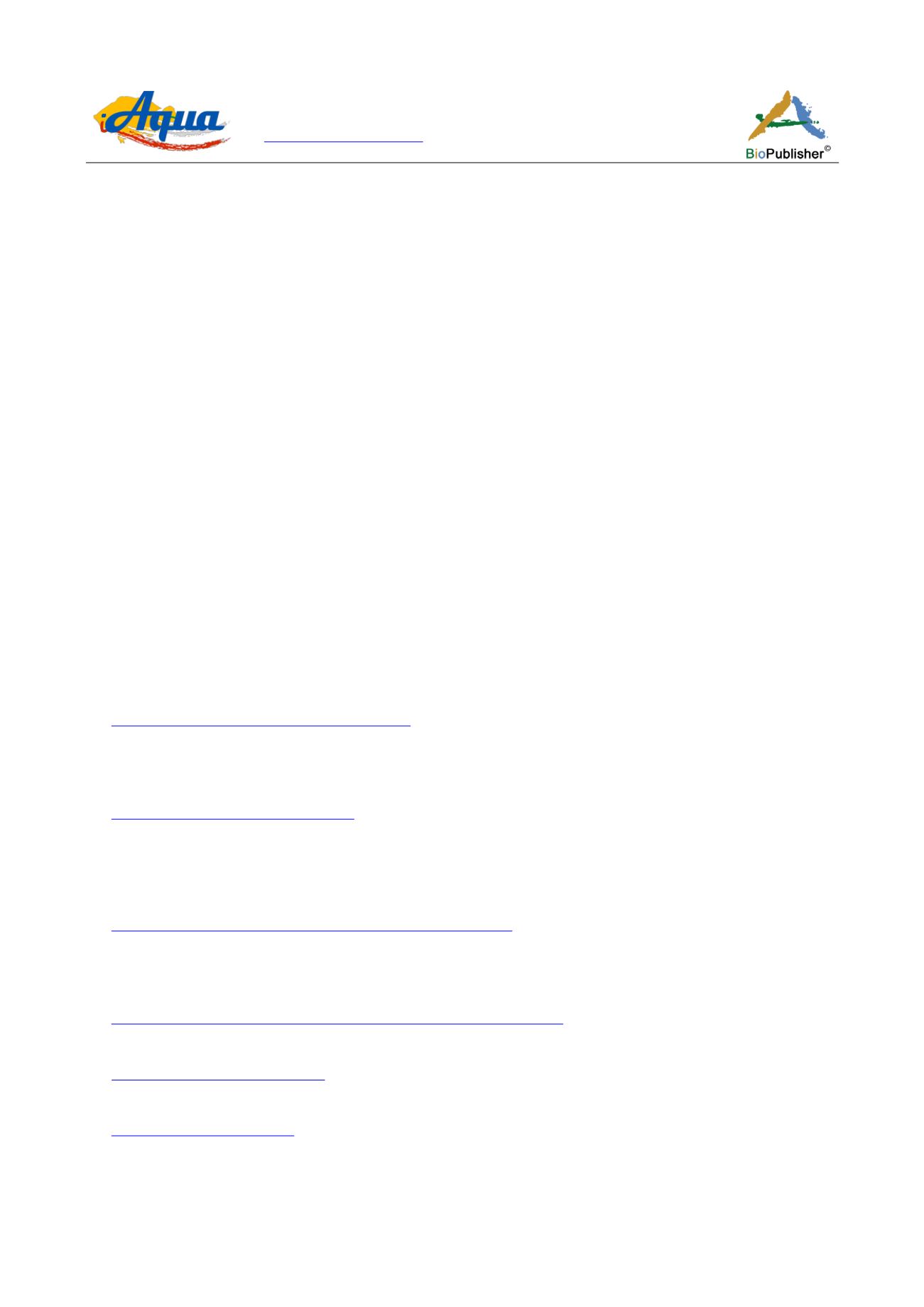
International Journal of Aquaculture, 2017, Vol.7, No.25, 166-173
172
be a point source pollution for this element in the upper reaches of the river, which may be absorbed, or removed
by chemical binding to other substances.
Many organisms have been used as bioindicators of aquatic environmental pollution. As Oehlman and Schulte-
Oehlman (2003) posited, organisms which have limited range of mobility are good bioindicators.
Malletia
cumingii
is a benthic bivalve with proximity to bottom sand. Metal elements load or metal element concentrations
in the environment can be estimated from this kind of species. Similarly, it is the opinion of Khatri and Tyagi
(2015) that through the application of Bioindicators we can predict the natural state of a certain region or the
level/degree of contamination. It is also pointed out that the concentration of metals in an organism is not
necessarily an indication of the level of concentration in the water column. According to Elder and Collins (1991),
bioaccumulation and toxicity are extremely situation dependent; therefore, concentration levels should not be
extrapolated from one particular area to other situations where the biological species or environmental conditions
are different. That even within one species, individual characteristics such as size, life stage, sex, and genotype
can have significant effects on responses to contaminants.
The quantity of metals absorbed and maintained in an organisms’ body depends on a lot of factors as was
explained by Cheng (1987), Elder and Collins (1991), Ayotunde et al (2012) and Oehlman and Schulte-Oehlman
(2003) to include; concentrations and chemical characteristics of water, ecological needs, metabolism and feeding
patterns of organism tolerance, size, life stages, species, organic substances, pH, temperature, alkalinity, hardness,
inorganic ligands, interactions, sediments and season. These factors can equally alter metal toxicity in the aquatic
environment substantially by causing attenuating effect.
References
Abe E.M., 2010, Geospatial distribution of fresh water snails intermediate hosts of parasites in Abeokuta Area of Ogun State, Nigeria. A PhD Thesis submitted
to the Department of Biological Sciences, Federal University of Agriculture, Abeokuta, Ogun State, Nigeria
Ako P.A., and Salihu S.O., 2004, Studies on some major and trace metals in smoked and oven-dried fish, Journal of Applied Science and Environmental
Managment, 8: 5-9
Ayotunde E.O., and Ada F.B., 2013, Conservation of biodiversity in Central Cross River State, Nigeria: he role of indigenous communities. Research Journal of
Fisheries and Hydrobiology, 8(2): 20-26
Ayotunde E.O., Offem B.O., and Ada F.B., 2012, Heavy metal profile of water, sediment and freshwater cat fish,
Chrysichthys nigrodigitatus
(
Siluriformes:
Bagridae
) of Cross River, Nigeria, Rev. Biol. Trop. International Journal of Tropical Biology, 60(3): 1289-1301
Burton B.A., and Pitt R., 2007, Stormwater Effects handbook: a toolbox for watershed managers, scientists, and engineers
Byjus, 2015, Biological importance of calcium and magnesium
David S.B., 1994, Fresh water snails of Africa and their medicinal importance CRC Press.com, pp.607
Duruibe J.O., Ogwuegbu M.O.C., and Egwurugwu J.N., 2007, Heavy metal pollution and human biotoxic effects, International Journal of Physical Sciences,
2(5): 112-118
Ekpenyong E., Ada F.B., Udofia U.U., and Etangetuk N.A., 2015, Assessment of metal concentrations in periwinkle (Tympanotonus fuscatus) and bivalve
(Egeria radiata) from the Cross River, South Eastern Nigeria, Journal of Biopesticides and Environment 2 (1-2): 1-6
Ekpo K.E., Asia I.O., Amayo K.O., and Jegede D.A., 2008, Determination of lead, cadmium and mercury in surrounding water and organs of some species of
fish from Ikpoba river in Benin city, Nigeria, International Journal of Phyiological Science, 3(11): 289-292
Elder J.F., and Collins J.J., 1991, Fresh water molluscs as indicators of bio availability and toxicity of metals in surface water system, Review in environmental
contamination and toxicology, 122; 37-79
PMid:1771274
FAO, 2015, Global Aquaculture production statistics database summary information, Food and Agricultural Organization of the United Nations,
FAO, 2016, FAO yearbook, Fishery and Aquaculture Statistics, 2014, Rome, Italy
Glanze W.D., 1996, Mosby Medical Encyclopedia, Revised Edition, C.V. Mosby, St. Louis, MO
Gupta S.K., and Gupta P.C., 2006, General and Applied Ichthyology (Fish and Fisheries), S. Chand and Company Limited, Ram Nagar, New Delhi, pp.1133
Hunters G.W., Swartzwelder J.C., and Clyde D.F., 1976, Tropical Medicine, 5th ed. W.B. Saunders Co. Philadelphia, pp.543-568
Idodo-Umeh G., and Oronseye J.A.O., 2006, Heavy Metal Pollution in Ololomoro, Niger Delta, Nigeria. Journal of Fisheries, 2/3(2): 267-279


